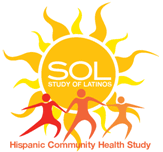| Title | Cuban Americans have the highest rates of peripheral arterial disease in diverse Hispanic/Latino communities. |
| Publication Type | Publication |
| Year | 2015 |
| Authors | Allison MA, Gonzalez F, Raij L, Kaplan R, Ostfeld RJ, Pattany MS, Heiss G, Criqui MH |
| Journal | J Vasc Surg |
| Volume | 62 |
| Issue | 3 |
| Pagination | 665-72 |
| Date Published | 2015 Sep |
| ISSN | 1097-6809 |
| Keywords | Aged, ankle brachial index, Arterial Pressure, Cuba, Female, Health Surveys, Hispanic or Latino, Humans, Logistic Models, Male, Mexico, Middle Aged, Multivariate Analysis, Odds Ratio, Peripheral Arterial Disease, Prevalence, Risk Factors, United States |
| Abstract | OBJECTIVE: Because Hispanic ethnicity in the United States is heterogeneous, the purpose of this study was to determine the epidemiology of peripheral arterial disease (PAD) within U.S. Hispanic/Latino groups defined by national background.METHODS: This analysis included 9648 men and women older than 45 years enrolled in the Hispanic Community Health Study/Study of Latinos (HCHS/SOL). The ankle-brachial index (ABI) was computed as the higher of the posterior tibial and dorsalis pedis systolic blood pressures for each leg divided by the higher brachial artery systolic blood pressure. The index ABI was the higher of the two. An ABI ≤0.90 was the criterion for the presence of PAD.RESULTS: The mean age was 56 years, and 55% were female. Overall, the prevalence of an ABI ≤0.90 (PAD), 0.90 to 0.99 (borderline), 1.0 to 1.39 (normal), and ≥1.40 (high) was 5.7%, 19.3%, 72.5%, and 2.6%, respectively. After multivariable adjustment for PAD risk factors and compared with Mexicans, Cubans had a nearly threefold higher odds for PAD (odds ratio, 2.9; 95% confidence interval, 1.9-4.4). The odds of PAD for the other Hispanic/Latino groups ranged from 1.2 to 1.8. Although men had a more than threefold higher odds of an ABI ≥1.40 (3.6; 2.0-6.5), the odds did not differ significantly by Hispanic/Latino background.CONCLUSIONS: Compared with Mexican Americans, all other Hispanic/Latino background groups have a significantly higher odds of having PAD, with the odds being nearly threefold higher among Cubans. |
| DOI | 10.1016/j.jvs.2015.03.065 |
| Alternate Journal | J Vasc Surg |
| PubMed ID | 26141696 |
| PubMed Central ID | PMC4550525 |
| Grant List | N01HC65236 / HL / NHLBI NIH HHS / United States N01HC65235 / HL / NHLBI NIH HHS / United States N01 HC065237 / HC / NHLBI NIH HHS / United States N01-HC65237 / HC / NHLBI NIH HHS / United States N01HC65234 / HL / NHLBI NIH HHS / United States N01HC65233 / HL / NHLBI NIH HHS / United States N01HC65237 / HL / NHLBI NIH HHS / United States N01-HC65233 / HC / NHLBI NIH HHS / United States N01-HC65234 / HC / NHLBI NIH HHS / United States N01-HC65236 / HC / NHLBI NIH HHS / United States N01-HC65235 / HC / NHLBI NIH HHS / United States |
Cuban Americans have the highest rates of peripheral arterial disease in diverse Hispanic/Latino communities.
MS#:
0018
ECI:
Manuscript Status:
Published
